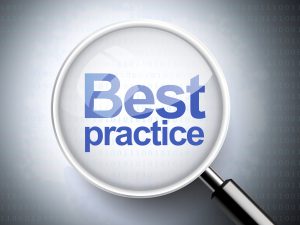 by Jill Tatum • December 2016
by Jill Tatum • December 2016
Recently I received a phone call from a new development director at an organization with an active Trust grant. Since I am the program director for the grant, he called to introduce himself and let me know of his new position. After we exchanged pleasantries and discussed a few specifics about the grant and the reporting process, he asked me a simple question: “So, what makes a really good grant application?”
A litany of key qualities flooded my mind. There are plenty of “don’t-dos”, and “what-we-look-fors” but since I knew that at this time he was just making conversation, I offered a couple of tips and we moved on. But after our conversation, I continued to think about his question and what grid I use when I look at a grant application for the first time.
Here is my list of what makes a really good grant application.
- Do your homework.
Familiarize yourself with the Trust’s interests and grant history. While our funding areas are broad, there are some things we don’t typically fund. This information can be found on our website. Also, our website has many helpful tools and tips for writing your grant application.
- Clearly communicate who you are.
Tell your story well. We read each application carefully before we make a site visit. The way you tell your story in the application forms our initial impressions of your organization. Be clear but remember that more isn’t necessarily better. Have your draft proposal read by someone who doesn’t know your organization as well as you do. Did he or she get it? If not, keep working until it clearly communicates your identity, mission, and your proposed project.
- Be specific about your request.
We want to know precisely what you’re asking the Trust to invest in. We look for this answer in your narrative, but also in your project budget. In fact, that one-page project budget is the heart of your proposal. Make sure it reflects solid planning. Some items and dollar amounts may change between the time you submit your application and when it is reviewed by our Trustees. That’s okay, but the overall project should remain unchanged. And don’t spend too much time defining the need. Tell us how this project will effectively meet the need.
- Understand the impact of your request.
While “measurable outcomes” are important and should be a focus when planning your project, there are other effects on your organization that you should also consider. What will happen if this project is funded? Will it increase your operating costs? Will you need to hire new staff to run it? Can you pay for it once you build or buy or hire? In other words, can the project, as proposed, be sustained? To demonstrate that you’ve considered the costs, you will be asked to submit a pro forma, typically in table format. A pro forma is a multiple-year projection of the financial impact of the project that accounts for any additional costs and sources of revenues to cover them. The pro forma and project budget are the two most important places that you can demonstrate careful, strategic planning.
- Demonstrate an understanding of your organization’s financial picture
As part of your application, you will give a summary of your most recent four years of financial information. While it provides a good snapshot of your financial health and recent trends, it doesn’t tell us the full story. Address any operating deficits or unusual revenues such as a one-time estate gift used to build reserves or pay off debt. If there are reductions in your net assets, address the cause. Investments in infrastructure are different from using reserves to cover operating losses. Other financial aspects we look at include how your organization accounts for gifts in kind or other non-cash contributions, and whether or not you fund the depreciation of property and equipment. The breakdown of annual revenue sources also tells part of your story and serves as a backdrop for your pro forma. Are the anticipated revenues in the pro forma in keeping with your organization’s financial history?
Obviously, one foundation’s grant application doesn’t capture the entirety of your organization. It does, however, reflect what is important to that foundation. Take some time before you start filling in the (many!) blanks of the application and simply look at the questions that are being asked. Then tell us your story and share your vision. Then your program director will contact you and make a personal site visit to your organization. We look forward to meeting you and learning even more!
Jill Tatum is responsible for the M.J. Murdock Charitable Trust’s Partners in Science program and reviews proposals in the regular grants program.







